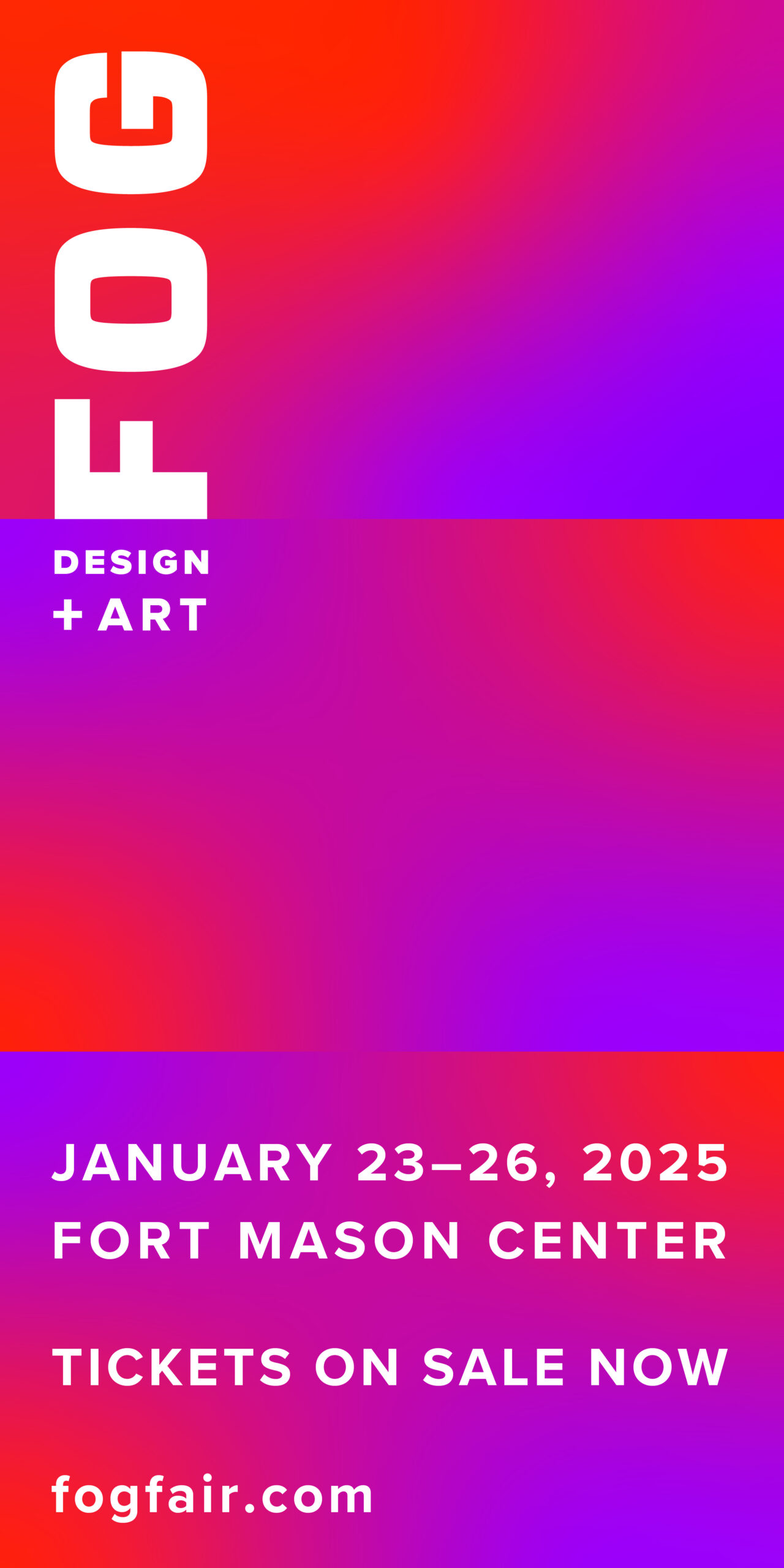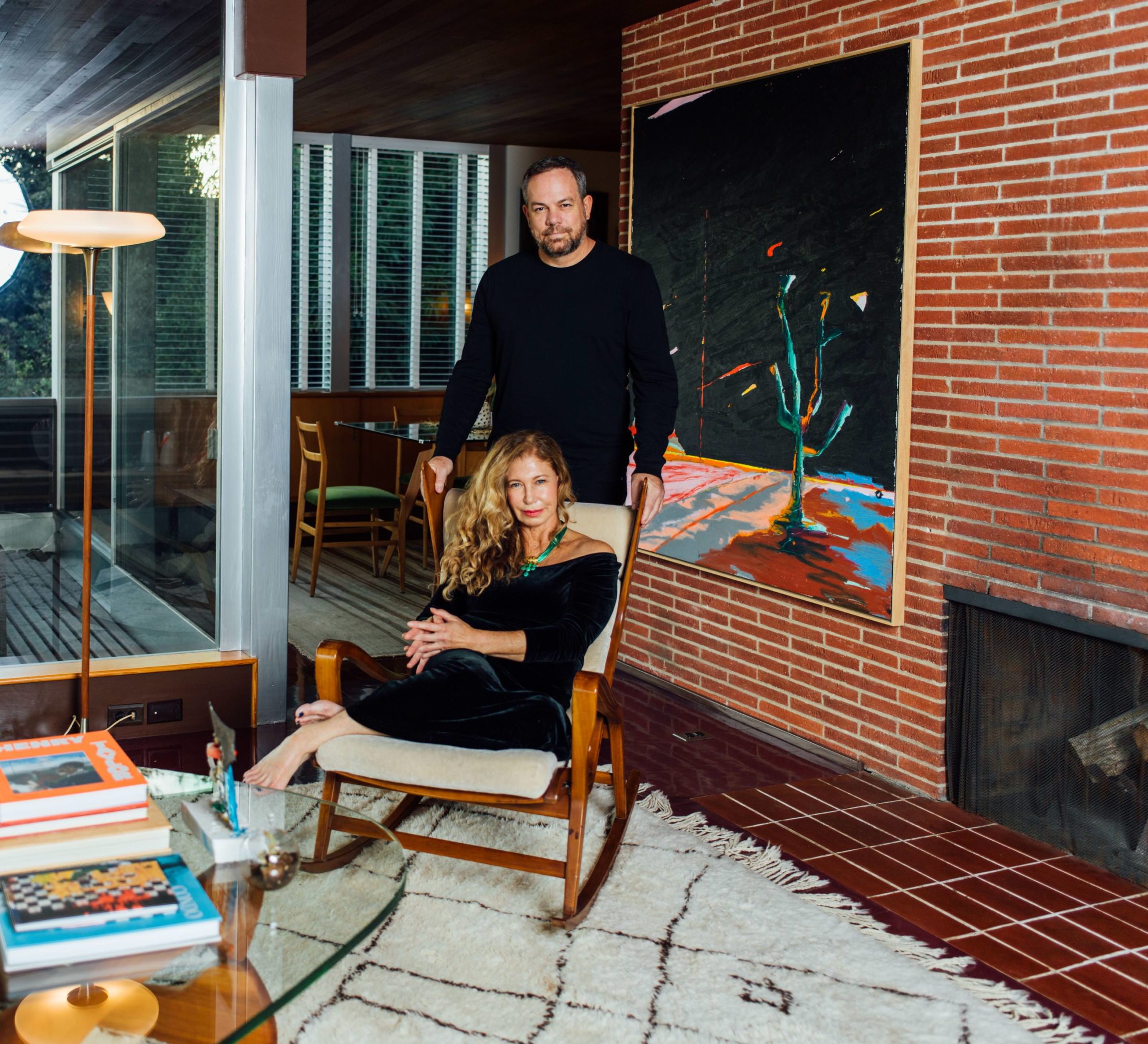Niki and Simon Haas, the fraternal twins known as the Haas Brothers, have had a meteoric rise in the design world. They started working in a studio together in 2010 in Los Angeles, and almost immediately experienced success (representation by R & Company), demand from clients (such as Tobey Maguire), and collaborations (with Versace, Peter Marino, etc.). Their work is surprising—hairy settees and stools with anamorphic legs; funny—ceramic vases with Dr. Seuss–like spikes and wonky necks; and often sexual—phallic floor lamps and labia-like curtains.
At Design Miami/ last December, they debuted a new series entitled “Afreaks,” a collaboration on beaded works with a group of South African women who dubbed themselves the Haas Sisters. Niki and Simon initially saw pieces by the female Xhosa bead workers at the Monkeybiz booth within the Design Indaba fair during a visit to South Africa over two years ago. After some initial conversations, they put the group of women on salary and made several subsequent visits to create together creatures in bronze and beads, some functional and some sculptural.
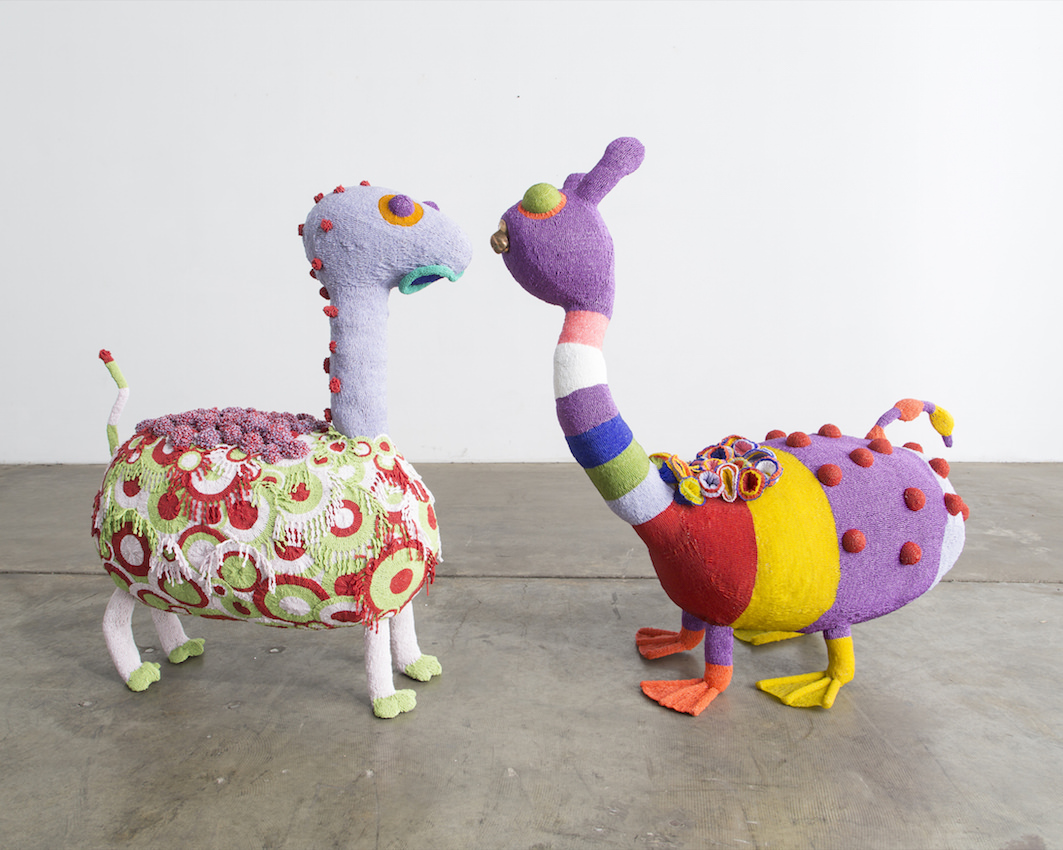 Photo by Joe Kramm/R & Company.
Photo by Joe Kramm/R & Company.
As the Haas brothers’ work has evolved, it has become harder and harder for some to categorize what they do, but they don’t seem to mind. This spring, their work was a part of the Cooper Hewitt Design Triennial (which opened in February). Whitewall spoke with the artists about their focus on social change and awareness, and why L.A. is the most dynamic city in the world.
WHITEWALL: We wanted to start by asking you about the “Afreaks” collection done with the Haas Sisters, which debuted at Design Miami/ just a few weeks ago. While you were in South Africa with your gallery R & Company for some World Design Capital events, what initially struck you about the beaded work you saw on view at the Monkeybiz booth at the Design Indaba fair?
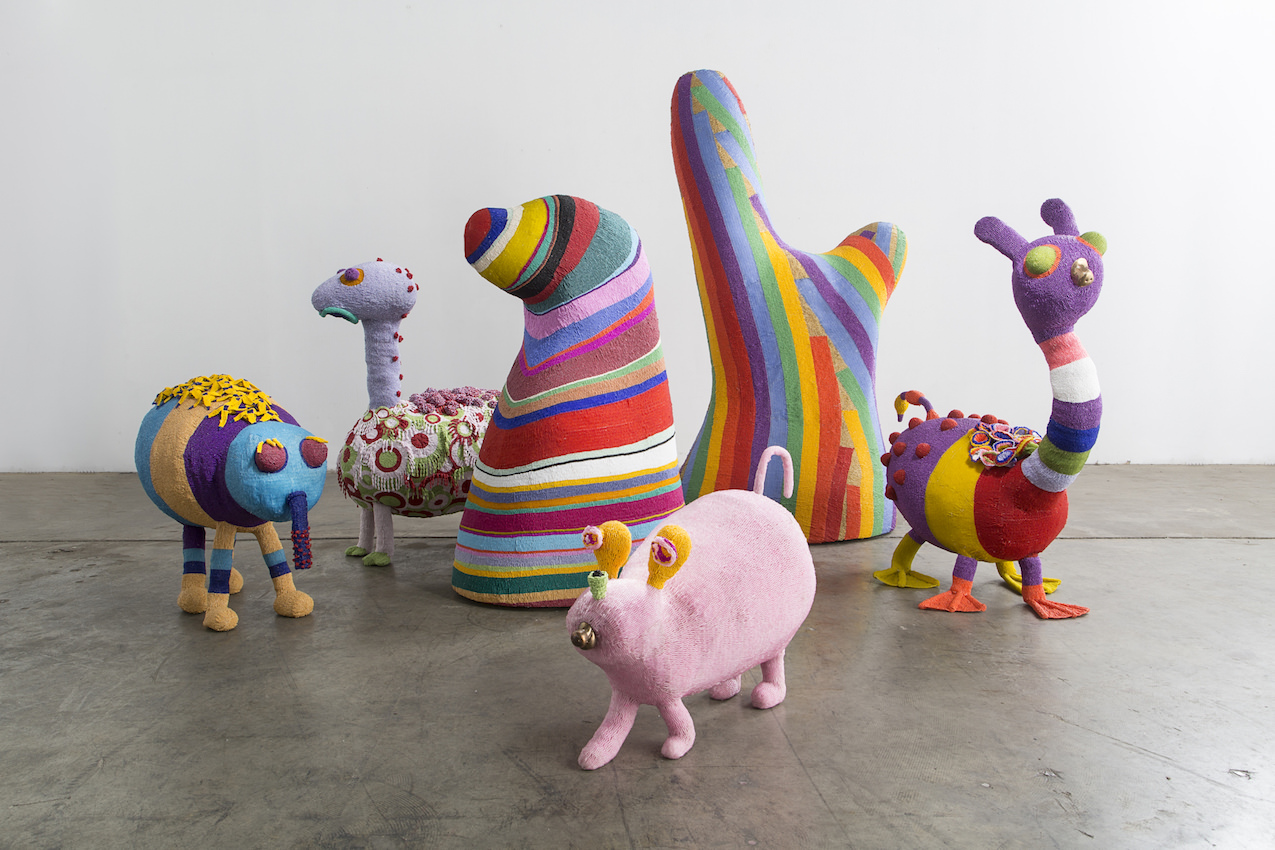 Photo by Joe Kramm/R & Company.
Photo by Joe Kramm/R & Company.
NIKI HAAS: The beadwork by the women at Monkeybiz had this undeniable energy. Monkeybiz makes an effort to give the women that made each piece credit. Their names are included in the information tag. There was pride in the work; the social aspect was evident. There was empowerment. The beads were more than an iconic aesthetic—they carried an energy that was undeniably irresistible and intriguing. It was the energy of massive talent that had been completely untapped on a large scale.
SIMON HAAS: I was struck by the expressiveness of the work at Monkeybiz and also excited by the fact that each piece has a tag with the name of the artist who made it. I liked the spirit of giving credit to the creator, since most of the objects of this type in Cape Town felt more anonymous and touristy.
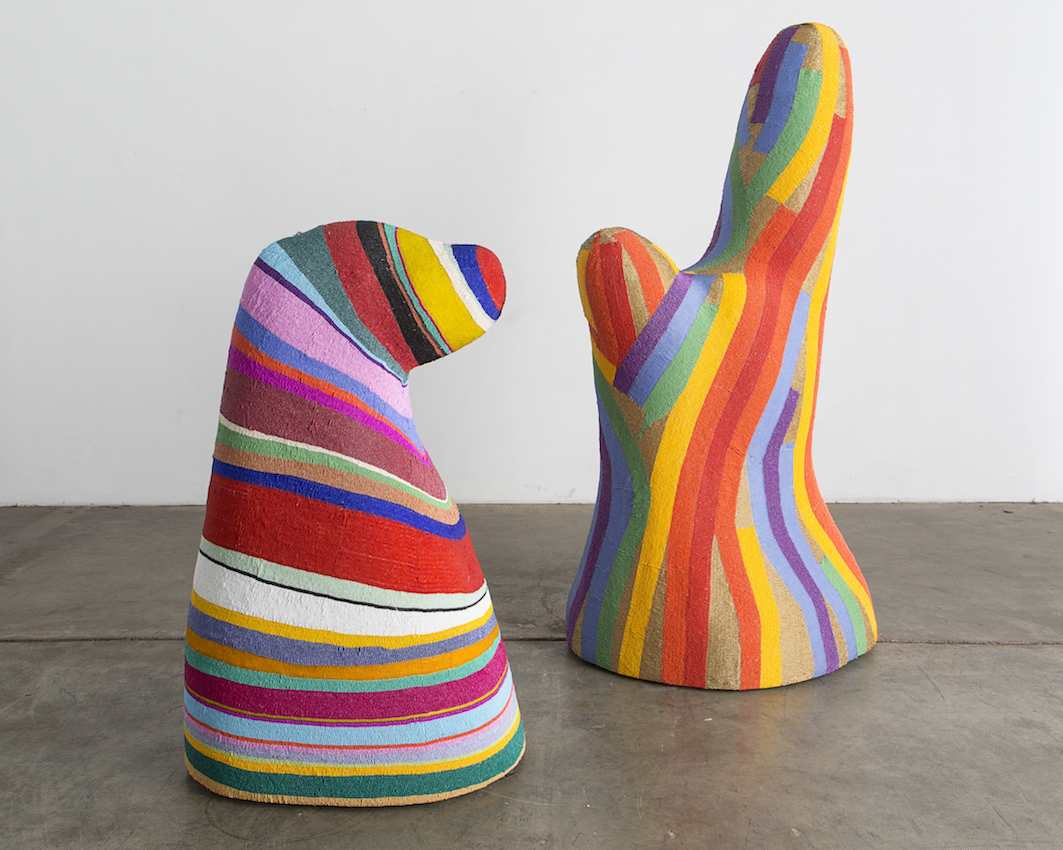 Photo by Joe Kramm/R & Company.
Photo by Joe Kramm/R & Company.
WW: Why did you want to collaborate with these women?
NH: Because they are immensely talented. Beyond that, they are unrecognized and unrespected. We saw an opportunity to open a venue for them that they had never been offered. But make no mistake—it was our privilege to be allowed an opportunity to collaborate. These women changed the way we think about our own practice. There aren’t many instances I can cite where outside forces affected our art mind so dramatically.
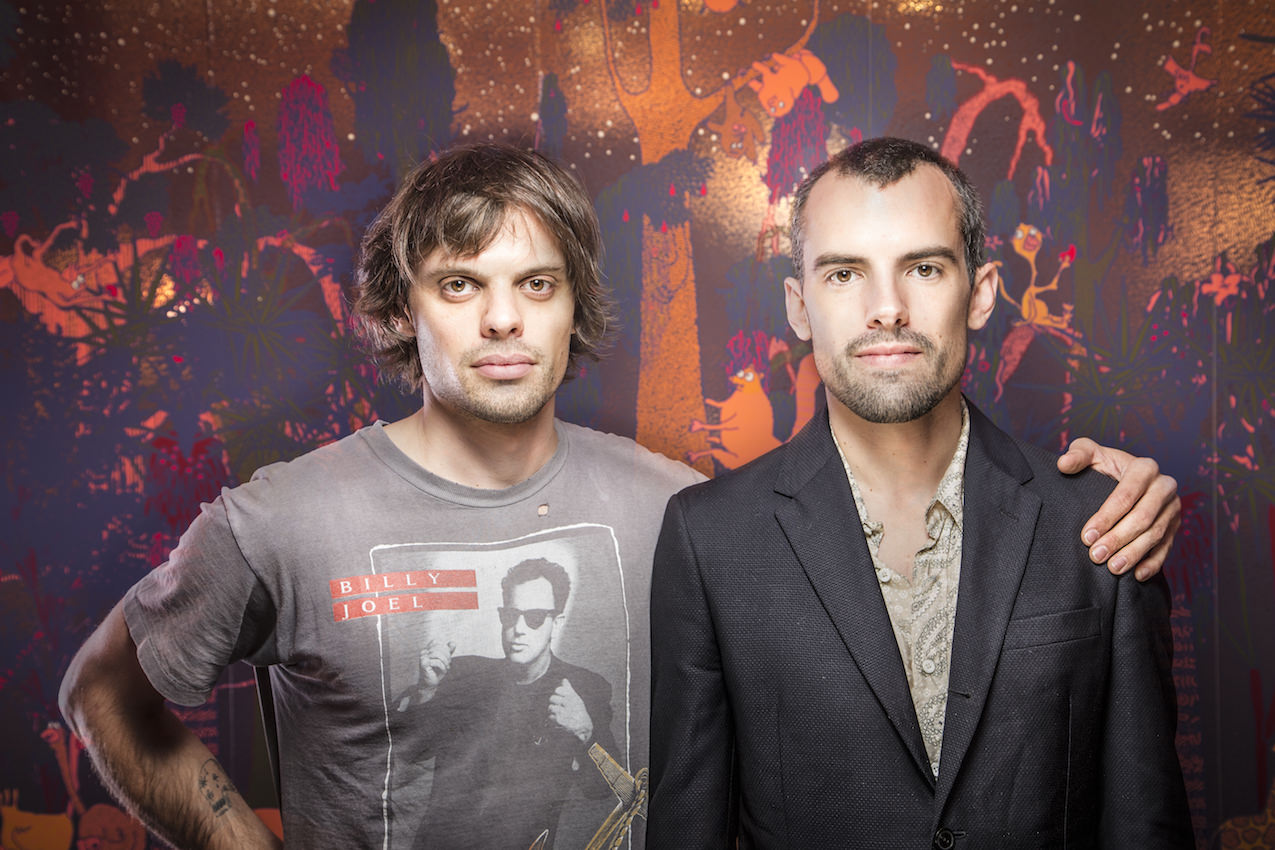 Photo by Joe Kramm/R & Company.
Photo by Joe Kramm/R & Company.
SH: We wanted to collaborate with this group of women because we were so impressed by the level of craftsmanship and artistry in their work. We are always looking for opportunities to learn something about the world and about ourselves, so I think we were naturally drawn to work in Cape Town as a way to reframe our own reality.
WW: Can you tell us about what it was like to work with them for the first time?
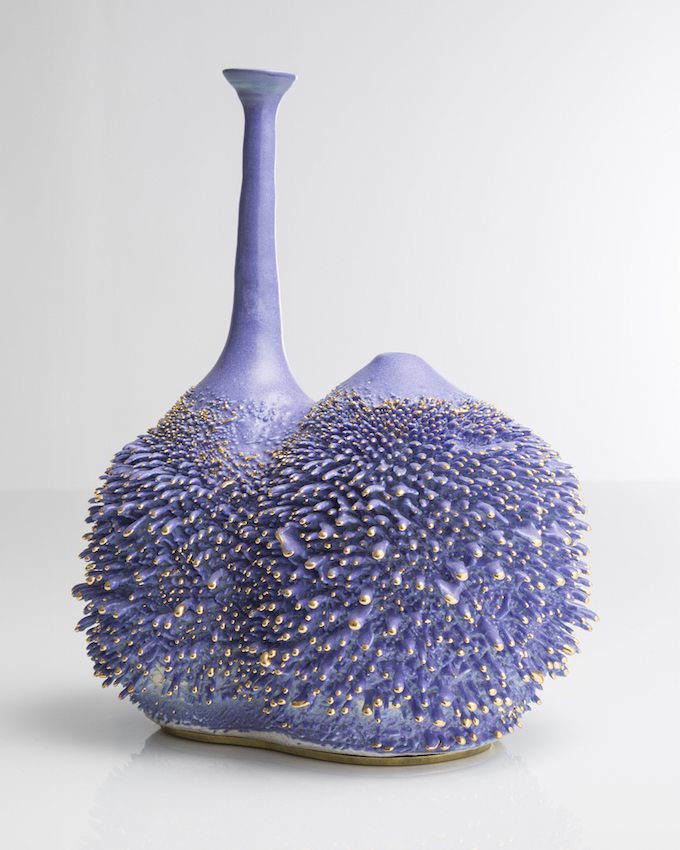 Photo by Joe Kramm/R & Company.
Photo by Joe Kramm/R & Company.
NH: Honestly, nerve-racking. It took a second for us to get used to each other. There was a lot of excited energy on both sides, but there was a lot of learning in the beginning. Surmounting that initial moment and getting into a groove inside the collaboration was euphoric. Once we established a visual language together, it was fun and easy to create objects we were all proud of.
SH: When we first arrived, I was nervous that the language barrier and the overall difference in our experiences could make it difficult to work smoothly together, but it hardly took any time for me to realize that those things were actually going to make the project better. We had to use hand gestures and limited vocabulary to get points across to each other, which made for a lot of laughter and joy in general.
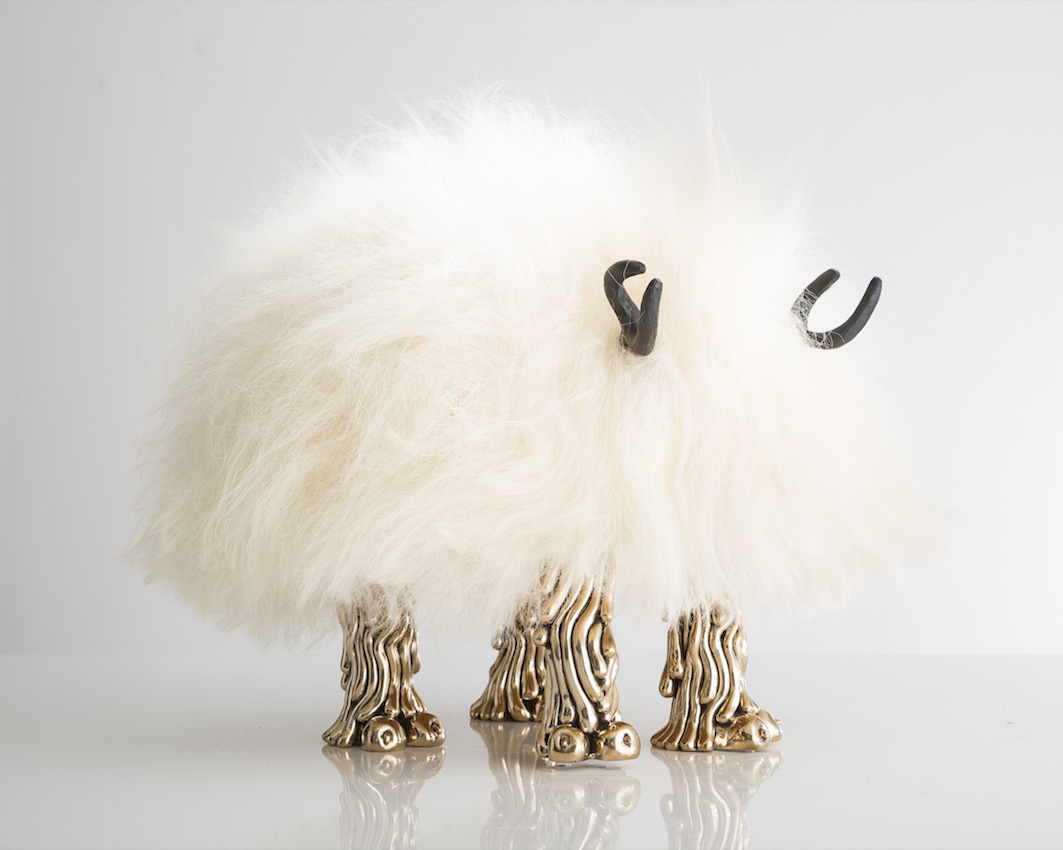 Photo by Joe Kramm/R & Company.
Photo by Joe Kramm/R & Company.
WW: Instead of hiring them on a commission basis, you put them on salary. How do you think that changed they way you worked together creatively?
NH: Salary gave them room to experiment—there was no penalty for making something that was perhaps unsellable. It also meant that they were not competing with each other to make sellable work. It led to a much happier team mentality and a wealth of creativity that was based in support and collaboration. The vibe was like a functioning modern commune. It was unbelievable.
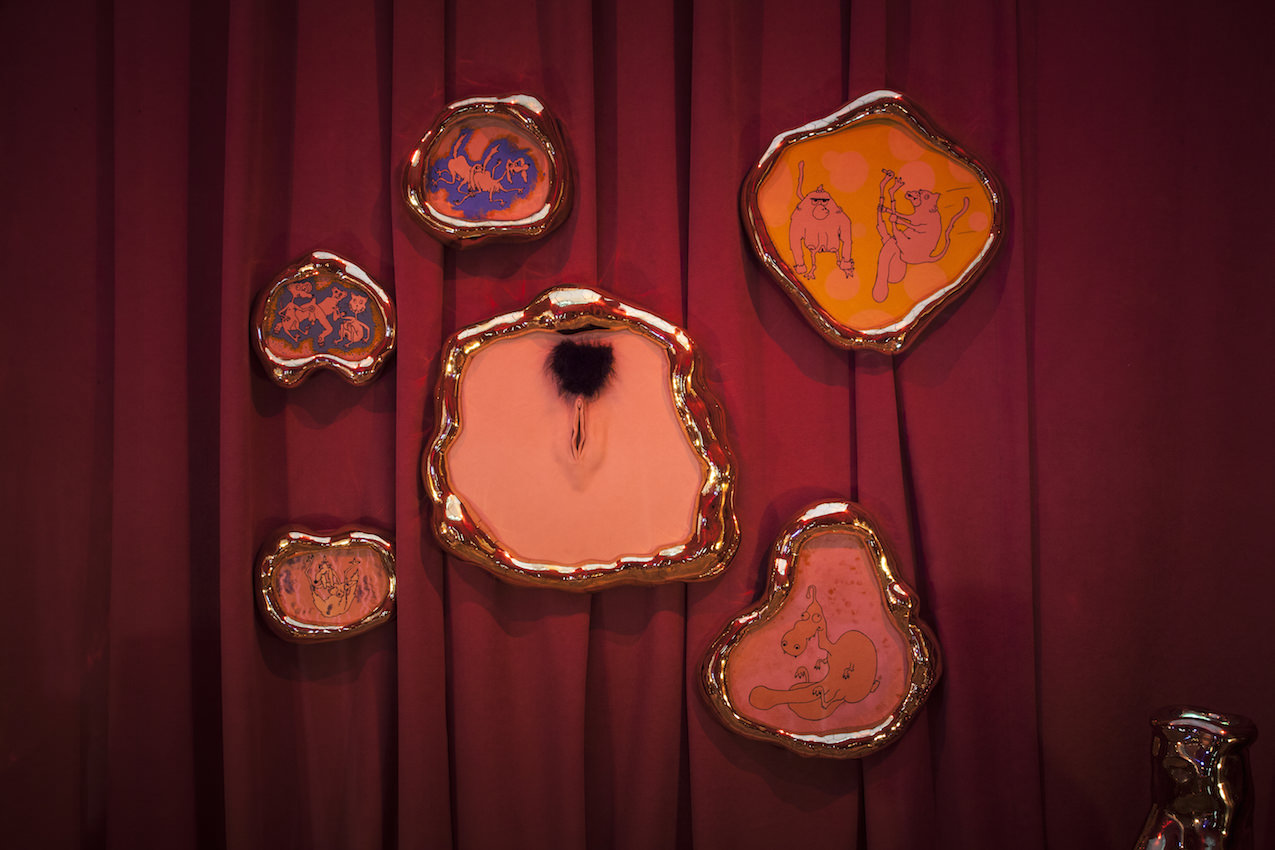 Photo courtesy of R & Company.
Photo courtesy of R & Company.
SH: The most important thing about paying them salary instead of a piece-by-piece flat rate is that it meant that time spent experimenting could generate income. Under normal circumstances, taking risks with shapes or time-consuming techniques could mean less money at the end of the month, but this system allowed for all of us brothers and sisters to freely experiment.
WW: How did the forms of the “Afreaks” collection evolve? How did the material or process of beading affect the forms you wanted to and could create?
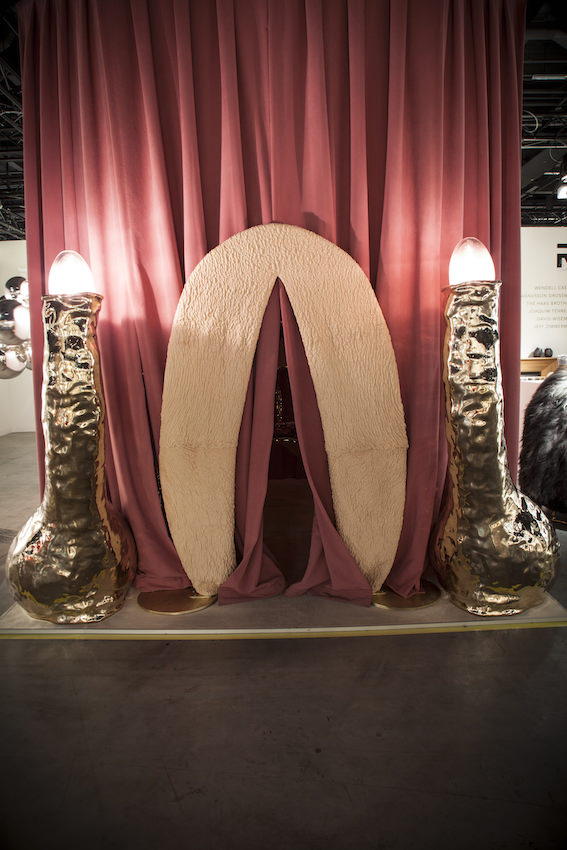 Photo courtesy of R & Company.
Photo courtesy of R & Company.
NH: There are very few limits to shapes you can achieve with beading. The fact that a bead is a very literal unit got Simon’s programming mind very excited. He created a very beautiful system for creating equations that can give birth to super-complicated natural forms out of beads. The fineness of this system next to the more crude language of the body form of the freaks was very exciting. Lots of the arms and surface choices were literally all of us just sitting down together and making sketches. I guess the fact that we were working with so much color affected the forms as well—inspired them to be more playful.
SH: This collection evolved organically. Before arriving in Cape Town we asked the Sisters to experiment on their own and try to create some new experimental bead processes. When we got there, all these samples were spread out and we sat with each woman to come up with something that utilized her stitches. As we worked together, they’d come up with new ideas and say, “Why don’t we try this?” We would do the same to them, and the end result is very much a physical manifestation of this back-and-forth conversation we had the entire time.
WW: Is this collaboration ongoing, and how do you think it has affected your overall studio practice?
NH: Absolutely—we hope to continue this project for a while. I’d have to say the largest way it has affected Simon and me personally in our own practice would be how we relate to our own privilege. It takes a community of support to make great work, whether that community is directly involved in the fabrication of the work or simply acts as the social structure that reflects your ideas back to you. The women in South Africa as well as many others there were our community, our collaborators, for this project. Our team here in L.A. and our social group help us make our work here. I think I really just try to give everyone around us that helps us in our vision credit. I also understand now that that the fleeting glory of doing something alone pales in comparison to the lifelong pleasure of engaging in and supporting a community. Also, being white males, we have the least resistance in our path socially on a global scale, understanding that a lot of what we have has been given to us by an arbitrary social structure that is thousands of years old and should be obsolete. This idea puts things in perspective. We are lucky to do what we do. Our reality as it relates to our social, historical, and technological advantages are nothing short of a miracle. We are making hyper-overpriced pieces of work. I’ve become seriously focused on defusing this immense privilege by pushing my advantages back toward those who aren’t so lucky as we are.
SH: This collaboration will continue for as long as possible—our whole idea was that we don’t want to pop in and do a one-off project with this community; we wanted it to be sustainable. Based on how well the pieces have sold so far, it looks like it’ll be going on for a long time. This has absolutely affected our own practice. We are putting more and more emphasis on the family aspect of our studio and looking for more ways to involve our family creatively.
WW: It seems like your initial and subsequent visits to South Africa have been a big turning point for you, personally and professionally. How did your visit to Cape Town change your perspective?
SH: The biggest change in my own life as a result of this project is that I have become acutely aware of my privilege. It was difficult for me to accept that so much of my life’s achievements ultimately have quite a lot to do with my own race and gender, and it made it somewhat difficult for me to enjoy my life for a period, but coming out the other side I can say that I actually enjoy life much more. I approach everything much more openly, much less cynically.
WW: You’ve always described your work as socially aware and yourselves as advocates for outsiders, delivering the 1 percent things to make them think, whether it is anti-shaming sexually, socially, creatively. Is that something that came naturally through your personalities, or something you both set out to do intentionally?
NH: Our initial moments of making socially aware work were natural and completely non-preconceived, but definitely at this moment in our practice it has become a large part of our work and a very intentional aspect of it. Once we became aware of our ability to be aware artists, it became our complete focus. I believe art is in place to ask questions, to enact social change. Truly without an intellectual or philosophical pursuit, art feels dead and useless to me. At the market value that art is hocked, I feel it needs to offer more than an aesthetic or clever message. It needs to offer a window into possibility; it needs to affect a viewer positively. This is my goal in making work. I hope whatever we make could be considered aware, and though the 1 percent is buying our work, I hope that we are speaking to a much larger audience.
SH: I think our anti-shame focus came naturally. I grew up feeling a lot of pressure from the outside world to change things about myself—to be more masculine, to be more put together, et cetera. I always thought to myself, “If I can prevent for someone else the kind of emotional turmoil I experienced myself as a young gay man, that is all I will ever do.” I am driven to call out our culture’s toxic behaviors because I want everyone, especially people who are not part of the upper-class, white male majority, to be able to enjoy their lives.
WW: Do you see “Afreaks” and collaborating with the Haas Sisters as sort of the next level of that?
NH: It’s the perfect project for us because it embodies everything we ever wanted to achieve with our work. It definitely, at the time we embarked on it, was the next level, for sure. It was uncomfortable and it made us grow a lot. I hope that whatever work we produce from here on out carries a similar level of integrity. Our standards of the way we interact with ourselves have changed a lot for the better. I hope that from now on we always float in the next level.
SH: This collaboration was absolutely a next step from our “Advocates for the Sexual Outsider” project. “Advocates” was something I felt very secure in doing since I have spent so much of my life considering how people’s sexualities impact their day-to-day lives, but racial and feminist issues were harder to tackle. I think we both understand that sexism is one of the most enduring problems our culture faces, but neither of us really knows how to approach it. This project in Cape Town made me think, “I don’t really know how to go about addressing sexism and racism as a white male, but maybe the problem is that not knowing how keep so many white males from trying.” I thought the best thing I could do is talk about it—try to explain my own thought process.
WW: You describe yourselves as blue-collar artists who grew up around well-connected, famous people, but say that you also grew up trying to escape the perception of nepotism. How do you maintain that perspective?
NH: [Laughs] Honestly, “Nothing matters and everything matters” is my mantra. Money and recognition do not bring happiness. I know personally and have plenty of good examples around me to understand this. To hold one’s self in too high esteem in some sense disassociates a person with who they really are. To truly believe that you or anyone else could be considered better than another makes a living, breathing person a commodity, in a sense. I don’t ever want to consider myself a commodity; it would make me completely unhappy. I know that other people already do consider me a commodity. That already bums me out, but it’s the price for having an audience. I maintain this perspective for myself. It makes me happier. And I truly believe deep down inside that no one is better than anyone else. We are lucky to get to live the way we do. We have complete liberty. I just wish the rest of the world had that as well.
SH: Growing up, I always thought to myself, “If I ever get into a position of power, I won’t let the power influence the way I think about things now.” I think that because we grew up blue-collar but with access to very exclusive realities, we have always been aware of the differences and similarities between them. You know the part in trashy mags that says, “Stars, they’re just like us”? I think Niki and I grew up actually knowing and believing that. We have always known from experience what parts of success/fame/money bring happiness. That is to say, they don’t—the stars we know who are happy are happy because they value happiness and are good people. Maintaining an awareness of your own social position requires effort, but it isn’t all that hard. It just means always knowing that being wrong is a possibility, and there is nothing wrong with that. There is only something wrong with not trying.
WW: Is the collaboration with the Haas Sisters something you’d like to duplicate or try in another community?
NH: As for duplicating in other communities, definitely. This project is about fair profit sharing and due credit. I hope we give that in any community we ask to work with us, whether it’s local or international.
SH: I think we’d like to collaborate with more women in general, and I have also been thinking a lot about how we might be able to do a project with some women in Native American reservations, as I think there is a very strong link between South African apartheid townships and American reservations. I would like to put some more focus on problems here at home.
WW: Your studio in Los Angeles has a music studio, and you’ve said it’s so you can incorporate more pop culture into the art world. How would you describe your community in L.A.?
NH: L.A. is the most dynamic city in the world. I truly believe this. Our community here is all sorts. I guess the best way to describe the scene is that everyone here wants to make good work. There’s a fantastic culture of doing your best and to be proud of what you do here and to do it with integrity—at least inside of our direct social group. It’s that simple. Sincerity breeds excellent work. As far as the pop world goes, L.A. is very pop. Pop is intriguing to me because it speaks to a lot of people. I see pop stars wanting real integrity, something that may have been lost in past decades, and I see artists wanting to break from obscurity and self-implemented isolation. L.A. is a couple steps into what I believe to be the journey of a major cultural revolution. It’s ready to explode with creativity because everyone’s intentions here are falling into place. Art needs pop and pop needs art—they are best friends that have kind of lost touch, I guess. Not like they’ve been in a fight; they just separated for a while. They belong together, and L.A. is the city that’s going to do that.
SH: Our community is made up of painters, dancers, musicians, street kids, rich people, industry people, bookish nerds, straight people, gay people, trans people . . . It is all the people who have found a home in L.A. and who are making something of themselves whether on a large or small scale.
WW: You’ve said that you’re proud to be a part of the design community, but that you see yourselves as “just doing what we do, no labels.” At the same time, you’ve also talked about how fairs have tried to keep you out because what you do is “art.” Does it get frustrating being forced into an either/or situation? How do you deal with that?
SH: It gets very frustrating when labels are imposed, and particularly when those labels can be determining factors for what you can and can’t do. If an art fair says we can’t be in it because our pieces are functional, or a design fair says we can’t because our pieces aren’t functional enough, that gets quite frustrating. That being said, when society pushes on you for doing exactly what you want, that serves as a great indicator of what you might be able to do to push back on society.
NH: The gray area is our friend. People having a hard time defining us has worked tremendously to our advantage. There are lots of rules in perfectly defined venues. Gray areas allow all the freedoms in the world. I hope no one will ever be able to define us. And I don’t think they will. I have no idea what I’ll be doing in five years. So how could anyone else?
This article is published in Whitewall‘s spring 2016 Art Issue, out now.







